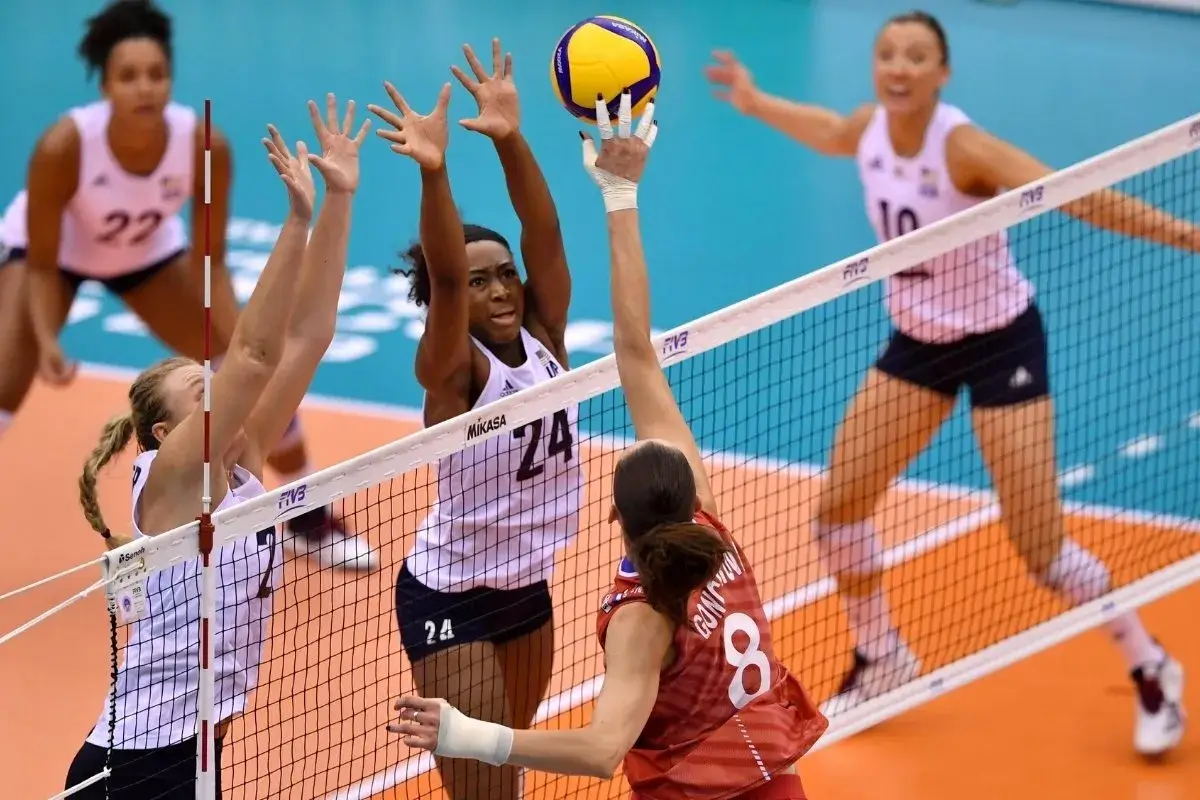Last Updated: February 28, 2024
Players responsible for defense in volleyball need special training. In fact, each position has its own responsibilities and drills, but defense can make or break a game.
Sure, volleyball is a team-based game, meaning the offense is just as important. Some coaches throw their best into the attack, others believe an iron defense is the key to success.

Whichever your vision is, here are ten tips to improve your volleyball defensive game.
Proven Tips to Up Your Volleyball Defensive Play
1. Visual Recognition is a Must
This isn’t just for defensive players but for everyone. However, since defensive players are expected to dig balls, they must be more careful than others. You need to visually recognize front and back row players within the first minutes of the game.
This way, you’ll know exactly who can attack the ball. Pay special attention to the setter, too. If the setter is at the back, they won’t attack the net. But there are three possible attackers who can take over. If the setter is at the front, there are only two possible attackers.
2. Ball Tracking for Anticipation
As a defensive player, you must track the ball at all times. Observing passes can help you anticipate the direction of an attack. For example, if the ball ends up in the target area, the setter could set any attacker, so there are more options there.
If the ball goes away from the net, options are more limited in the middle. Furthermore, the player passing the ball will help you determine who the setter will set to. If the outside hitter passes the ball, the setter is less likely to set the respective hitter.
3. Keeping an Eye on Attackers
While every defensive player should keep an eye on the attacker, the truth is, this job is usually for the middle blocker, a position responsible for top-notch communication in terms of alerts. The middle blocker can often indicate what possible play might be run next.
Try to identify a pattern in the opponent team’s attacks. Most teams run similar offensive plays when they get to a particular rotation. It may sound complicated, but it’s doable. Once a rotation kicks in, you should be aware of what’s about to happen.
4. Communication is Critical
Everyone knows communication is a must in volleyball, but you need to push and make sure it’s actually effective as well. Solid communication implies being direct and concise, but also acknowledging others’ instructions.
You can use words everyone understands, but you can also develop a unique language for your attacks. The earlier you communicate something you notice, the more effective your defensive game will be.
5. Back to Basics
Everyone’s trying to innovate and find impressive new techniques and strategies, but this also means people end up running away from the basics. Without mastering the basics, you’ll never be able to develop a new defensive strategy and actually use it at its highest potential.
Basic training is an ongoing process. You must work on your movement skills and ensure you can easily get in the right positions, only to control the balls more effectively. Making the play is nearly impossible when caught off guard.
6. Stay Still Until the Ball is Hit
As you observe and read your opponent, you shouldn’t move until the ball is hit by an opposite attacker. Sure, being able to anticipate things means you can move early, but this is a terrible mistake for someone who’s not a professional.
The general idea is simple. If you move before the attacker hits the ball, they’ll be able to adjust based on your move, so they are more likely to carry out a successful hit. You’ll also need more time to dig the ball, in case you actually stand a chance.
7. Train Explosive Footwork
Since you’ll usually need to wait until the ball is hit to move, you clearly have to be extremely fast. And just because you can anticipate the direction, it doesn’t always mean you’ll be quicker than the ball. That’s why footwork training is so important.
You must be able to jump like a cobra in any direction at any random time. Anticipation is important, but get ready to be surprised every now and then, too. Flexibility and power are critical then, so make sure you focus on such drills.
8. Stay on Your Toes When Defending
Some recommend staying on your heels, but that’s not always a good idea, especially if you’re facing a rapid attack. In order to be able to move super fast and jump in any direction, you must be on your toes. That’s what gives you more flexibility.
It’s one thing to jump from your heels and another to jump from your toes. Try it, and you’ll see yourself. At times, you may have to fight your instinct.
9. Different Hand Positions
Your success depends on how you use your hands. If you prefer forearm digs, you must adopt a low hand position. If you prefer the overhand dig, this approach is wrong. A neutral position may also help if you’re not sure, but it definitely pays off specializing in one thing or another.
Being more versatile means you may have to adapt to different attacking styles, though.
10. Assess the Blocker’s Hands
There are all sorts of things you need to pay attention to, and blocker’s hands are some of the most important. Most defensive players tend to overlook this aspect. When the ball is hit by an attacker, you need to look at the blocker’s hands.
This way, you’ll be able to predict where the ball is about to go. It’s just a matter of enhancing your defense.
Final Thoughts
These tips will give you a more professional approach over your defensive play. While every coach will have their own thoughts and ideas, there are certain things you can also do yourself in order to up your game in defense and help your team win more games.
